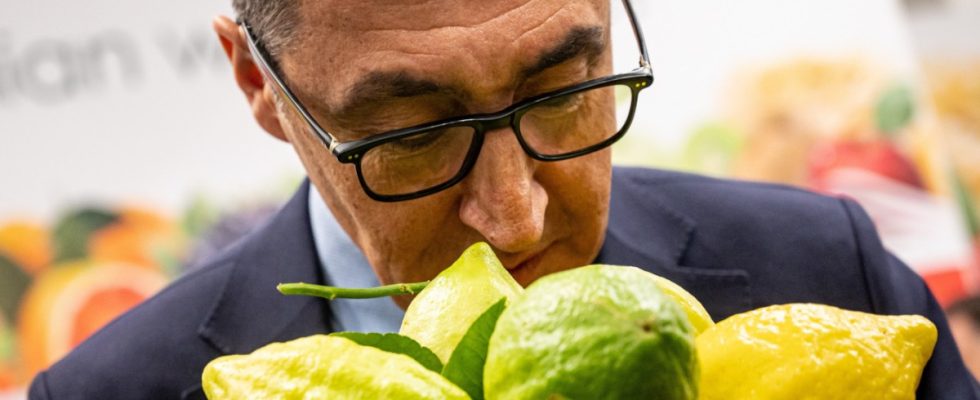Cem Özdemir knows exactly what good school food can look like. Just maybe not from Germany. Last year, during a trip to Brazil, the Green Party’s food minister visited a school in Belo Horizonte. With a white hygiene cap on his head, he watched as a lunch was prepared in large pots, prepared from regional products. Millions of students in Brazil are fed this way every day. The minister from Germany was impressed.
If Özdemir has his way, meals like this will one day also be available in Germany. On Wednesday the Federal Cabinet adopted its “nutrition strategy”. It is intended to help make diets in Germany healthier, less meat-heavy and more sustainable. “And it can taste good too,” says Özdemir. Community catering, such as that found in canteens, hospitals or schools, should play a “key role” – after all, it feeds 17 million people in the country every day. “We are the third largest economy in the world,” says Özdemir. “And it doesn’t make sense to me that children leave school hungry.” He can say from his own experience that it is difficult to learn on an empty stomach.
The Citizens’ Assembly also spoke out in favor of good, free school meals
It was only at the weekend that the Citizens’ Nutrition Assembly came to similar conclusions. Nationwide, “free and healthy lunches should be offered at all kindergartens and schools,” recommended the citizens who had debated ways to improve nutrition in the council for months. The federal government’s nutrition strategy was also preceded by a citizens’ forum that brought together ideas – for example on food waste or advertising for unhealthy products. However, like many good plans, it suffers from implementation: sometimes there is a lack of responsibility, sometimes there is a lack of money, sometimes there is a lack of common will. “There are many noble goals in the nutrition strategy,” says Luise Molling from the Foodwatch consumer association. “But hardly any effective measures.”
When it comes to communal catering, for example, the federal government only has direct influence on its own canteens: that is, on food in ministries, in the Bundeswehr or the Federal Police, for example. State and local authorities regulate matters in schools. Which is why the federal government now wants to at least ensure that the standards of the German Nutrition Society (DGE) become binding in communal catering by 2030. This would make many meals healthier.
Özdemir’s ministry now wants to encourage regions to implement higher standards with a competition entitled: “Nutritional transition in the region”. Özdemir also admits that the main task in schools lies with the states. And the federal government currently lacks the money for a really big offensive anyway.
Here the advertising ban for unhealthy food, there the farmers’ protests
Another of the minister’s ongoing topics is also included in the strategy: a ban on advertising for sweets and fatty foods aimed at children and young people under the age of 14. There have been corresponding legislative plans since last summer, but there have been arguments about them for just as long. The restrictions go too far for the FDP, and the advertising industry is also protesting.
“It would be a joke of history if we don’t find a solution,” said Özdemir when he presented the nutrition strategy in his ministry. Horns blare through the windows every now and then – there are five tractors parked in front of the ministry. The farmers’ anger also provides the accompanying music on Wednesday.
The nutrition strategy comes just in time for the Green Week agricultural trade fair, which begins on Friday – but also amid the protests against reduced diesel subsidies for farmers. This Thursday the situation of farmers is also a topic in the Bundestag, Özdemir is presenting the “Agricultural Policy Report”.
The coalition factions have drawn up a motion for a resolution that is intended to address the needs of farmers. “‘Business as usual’ is not an option,” it says. “A comprehensive approach is needed to transform towards future-proof agriculture.” But the application is similar to the federal government’s nutrition strategy: it raises a lot of questions. So far it does not contain any concrete answers.

